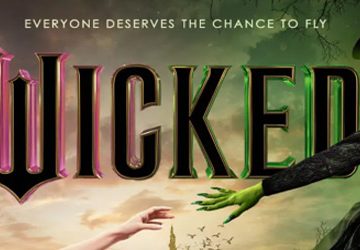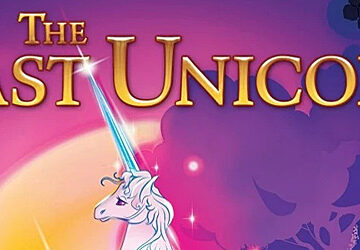Peter Jackson brings us back to Middle Earth one last time with his third Hobbit movie, The Hobbit: Battle of the Five Armies. This is the sixth installment in the Middle Earth saga that started back in 2001 with The Lord of the Rings: The Fellowship of the Ring. In 2003, Jackson completed The Lord of the Rings trilogy with the very well received Return of the King, a film that took home all eleven Academy Awards it was nominated for, including Best Picture. Although the trilogy was complete and audiences were very happy, there seemed to be something missing. Fans of the series started Internet demands for Peter Jackson to go back to the studio and make the prequel of the series, The Hobbit. Seven years and lots of rumors later, fans got the announcement that Guillermo Del Toro was to helm the two film adaptation with the original crew to write the screenplay. After a year of pre-production, MGM, owners of The Hobbit film rights, put the project on hold due to financial troubles, forcing a disappointed Del Toro to leave the project. Executives only had to ask and Peter Jackson was on board to direct, happily making his way back to Middle Earth. Announcements were made that the book would be split into three films rather than two. Some fans were saying that there was no need to turn a three hundred page book into three movies, while others put their trust in Jackson to expand upon this vast and dense world that J.R.R. Tolkien had created and give them a lush, rich three film experience.
- Still from The Hobbit: The Battle of the Five Armies
Released in 2012, the first Hobbit film, An Unexpected Journey, was met with mixed reviews. Some said the filmmakers used too much CGI and that it lacked the more organic feel of the previous movies, while others praised the film for successfully bringing their beloved series back in style. In 2013, fans got the second film, The Desolation of Smaug, which was met with a more positive response and redeemed the series for a lot of people.
Fast forward to the present. Peter Jackson unleashes his third and final Hobbit film, The Battle of the Five Armies. The film picks up right where Desolation left off, and we get to see Smaug’s fury as he unleashes it upon the unsuspecting people of Lake Town. Audiences are once again shown the power and devastation that this dragon can unleash. Bard the Bowman (played by the perfectly casted Luke Evans), still in the jail cell where he had been placed in at the end of the second film, was the one person in Lake Town not shocked by the arrival of a fire breathing dragon, knowing that he had been lying dormant in the mountain above for the past sixty years. As Smaug burns all of Lake Town to the ground, Bard frees himself from his cell and tries to defend the city by climbing to the highest point in town and shooting arrows at the beast. After the fight between Smaug and Bard come to it’s conclusion, the film shifts it’s attention to the theme of the film, the battle of the five armies.
- Still from The Hobbit: The Battle of the Five Armies
With Erebor vacant after sixty years of being guarded by a practically undefeatable foe, the treasure inside is now up for grabs to anyone who can take claim over the mountain. Thorin, his fellow dwarves, and their burglar, Bilbo Baggins of the Shire, have shut themselves in the mountain and are digging through the treasure to recover a jewel that would give Thorin the right to be king under the mountain. This jewel is the Arkenstone. After both his father and grandfather had succumbed to Gold Sickness and insanity, Thorin tries not to give in to the weight of the generations, but upon entering the mountain and seeing the vast treasure he succumbs to his fate and starts to fall ill with the sickness of the mind. As Thorin and his companions are held up in Erebor, they are marched on by men and elves who want what is rightfully theirs, but when Thorin refuses, they have no option but to wage war. Thorin calls his kin for reinforcements. Also, Azog calls his troops of orcs, goblins, trolls, bats and all the other terrible enemies he has at his disposal to attack. Azog wants the mountain for it’s strategic placement for the war to come as Necromancer tries to rise up and become Sauron once more.
The entire series flows well and has a very satisfying end which blends seamlessly into the previous trilogy. Martin Freeman, who plays Bilbo, was perfectly cast and carries the title character with ease. If he was to fail, so would the series, but he delivers and is arguably the best actor to wear the big furry feet. As Thorin, Richard Armitage plays a much younger dwarf than in the book, but he embodies the fall and rise of a proud dwarf king. Ian McKellan is sublime as Gandalf and is always met with excitement anytime he returns from his adventures and helps to save the day.
The biggest problem Jackson faced when taking on this trilogy was to distinguish the thirteen different dwarves so that they were all easily identifiable, which he pulled off masterfully with the help of his make up effects artists. He was most hesitant on taking up The Hobbit adaptation because of this very difficult task. Rightfully so, since in the book there are little descriptions of the dwarves, and while that may work in print, it would never translate over to film.
- Still from The Hobbit: The Battle of the Five Armies
One of the many improvements made to The Hobbit is all of the extra storytelling that they put in this three film series to make it engaging and downright fun. The Hobbit is a fun book but would make a lackluster film if adapted exactly. There is little action in the novel and even less is explained about events. Peter Jackson wanted this trilogy to not just honor the novel but to also expand upon it, fitting this story into a world that he already established. When the book was written, Tolkien had not thought of the world of Middle Earth in full scope and a lot of characters and events that would be taking place in this timeline did not yet exist. In order to keep with continuity, Jackson took from the appendages of the Return of the King to fill in some gaps. The addition of Dol Guldur, the Necromancer and the Rising of the Nine were all necessary to blend the two series together. The character of Legolas had yet to be invented as well, but since he is an elf of Mirkwood and The Elf King’s son, it would make sense that he would have been there.
Novel purists may pan these films, but for fans of the movies, this is a magnificent end to a glorious and near perfect six film series. It may be sad that our time in Middle Earth is over, but at least now we have closure on one of the greatest sagas of all time, and it was one hell of a ride. Thank you, Peter Jackson, and everyone else involved in this series. You gave your audience an amazing adventure that will stand the test of time. Cryptic Rock gives The Hobbit: The Battle of the Five Armies five out of five stars.
- Warner Bros. Pictures









No comment